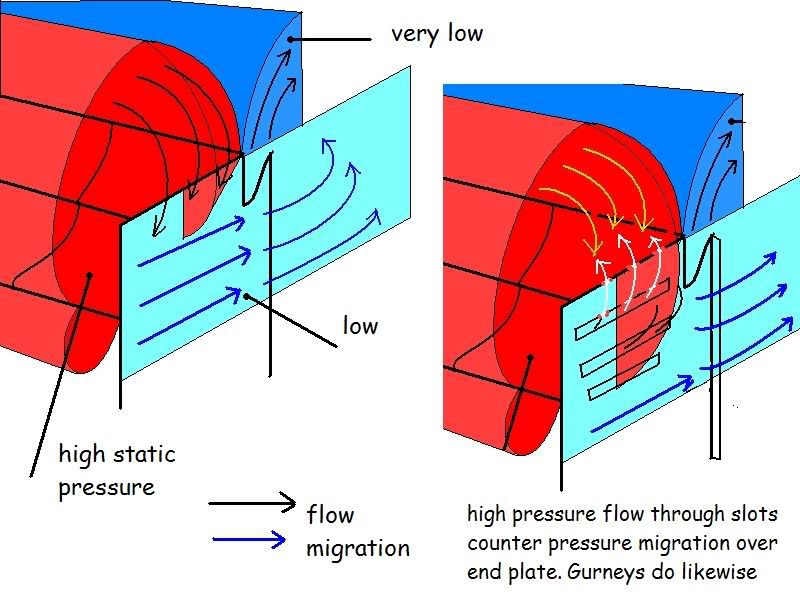raymondu999 wrote:Actually, watching the race again, you can quite easily see something happening to the water right to the back of the McLaren rear wings at the start/end of the straights. Wouldn't this have already told the other teams specifically how they were achieving the f-duct stalling? It seems to me like the rain was demonstrating the aerodynamics to the f-duct blowing.
In heavy upwash (roostertail) it was difficult or impossible to see any tip vortices, so I think you may be referring to something else? What lap do you see it clearly on? Check the instances that I mentioned above, is that the same phenomenon?
ringo wrote:Vortex generation is usually used to interact with objects downstream. It's not something the team would want to increase, because it adds drag.
Vortexes are usually used for mixing. Beyond the wing it's best to reduce them, because they affect the upwash of the wing.
However I do think though that the f duct is doing some kind of wake control, so in a sense vortexes have to do with that.
The reason i say the Merc is stalling is because of the direction of the curved duct. I don't know it to be true, but it's a hunch. I have to look into it more before i can stick to any theory.
No actually vortices are used in aerodynamics all the time to keep planes in the air: Delta wing planes form many vortices at the leading edge, which pass over the low pressure surface. Solid vortex generators are fixed to the leading edge on small planes to maintain lift at slow speeds. The same concept is used on F4 Phantoms, F15 Eagles, and Super Hornets. The point on the jagged leading edge is there solely to create a vortex that streams over the wing. Why? Better/more predictable low speed flight characteristics. A stationary laminar bubble on the back of a car wing would only creates a small amount of drag, but is preferable to flow separation, which creates more drag. Vortices shouldn't be thought of as good or bad things, they're just things. Phenomena that come with any fluid. In some cases they are to be avoided (tips) in others they are helpful (surfaces).
More importantly, there's practically nothing else those slots could be used for. If air is coming out of them, vortices are being formed. It's called jet in crossflow, has been studied for decades. Only question is, what do the resultant vortices look like, and what do they do.
I think too many people are stuck on the word stall (this is why I don't use it- the term just isn't important to understanding the mechanics of what's happening), and are trying hard to make it work. Instead, look at the actual cars, the actual devices. Ask yourself what could be happening, and what effect that would have. Then find the research that applies to these things, real world physics done with real world airfoils and fluids (more reliable than programs when you don't know the parameters). I say this, of course, because I've already done all this.
viewtopic.php?f=6&t=8028&p=150459#p150459
I have yet to see a paper that says a jet in crossflow is used to force separation, but I assume, as I've said before, that it would take tremendous pressure. The end effect may be called stall, who knows. But we shouldn't start with a vague term like that.
Another realization I had, Hamilton, king of the late-brakers now has an extra bit of drag to use when he finally wants to slow that sled down. I wish my broadcast had the graphic with the g-meter. The Mac braking g's must be insane with the sudden tip vortex generation.
Kelpster








